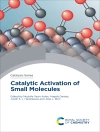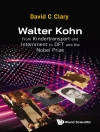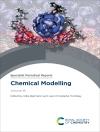Traditionally, magnetic materials have been metals or, if inorganic compounds such as oxides, of continuous lattice type. However, in recent years chemists have synthesized increasing numbers of crystalline solids based on molecular building blocks in the form of coordination and organometallic complexes or purely organic molecules, which exhibit spontaneous magnetization. In striking contrast to conventional magnets, these materials are made from solutions close to room temperature rather than by metallurgical or ceramic methods. This book, which originates from contributions to a Discussion Meeting of The Royal Society of London, brings together many of the leading international practitioners in the field, who survey their own recent work and place it in the context of the wider fields of magnetism and supramolecular chemistry. All aspects of molecular-based magnets are addressed, including synthesis, structure-property relations and physical properties. Contents include details of the characterization of the first purely organic ferromagnet, the synthesis of high coercivity materials and a unique description of new materials with Curie temperatures well above ambient. A coherent survey of this rapidly developing field for the more general reader, Metal-Organic and Organic Molecular Magnets will also be welcomed by researchers and lecturers in materials science and inorganic or solid state chemistry.
Innehållsförteckning
Molecular-based Magnets: Setting the Scene;
p-Nitrophenyl Nitronyl Nitroxide: The First Organic Ferromagnet;
Crystal Architectures of Organic Molecular-Based Magnets;
Unusual Crystal Structures and Properties of Nitronylnitroxide Radicals. Possible RVB States in Molecule-Based Magnets;
Muon-spin-rotation Studies of Organic Magnets;
High-spin Polymeric Arylamines;
Room-temperature Molecule-based Magnets;
Design of Novel Magnets Using Prussian Blue Analogues;
Magnetic Anisotropy in Molecule-Based Magnets;
Multifunctional Coordination Compounds: Design and Properties;
Ferrimagnetic and Metamagnetic Layered Cobalt(II)-hydroxides: First Observation of a Coercive Field Greater than 5 T;
Towards Magnetic Liquid Crystals;
Quantum Size Effects in Molecular Magnets;
Large Metal Clusters and Lattices with Analogues to Biology;
New High-spin Clusters featuring Transition Metals;
From Ferromagnets to High-spin Molecules: The Role of the Organic Ligands;
Molecular-based Magnets: An Epilogue;
The Bakerian Lecture 1999: The Molecular Chemistry of Magnets and Superconductors.












